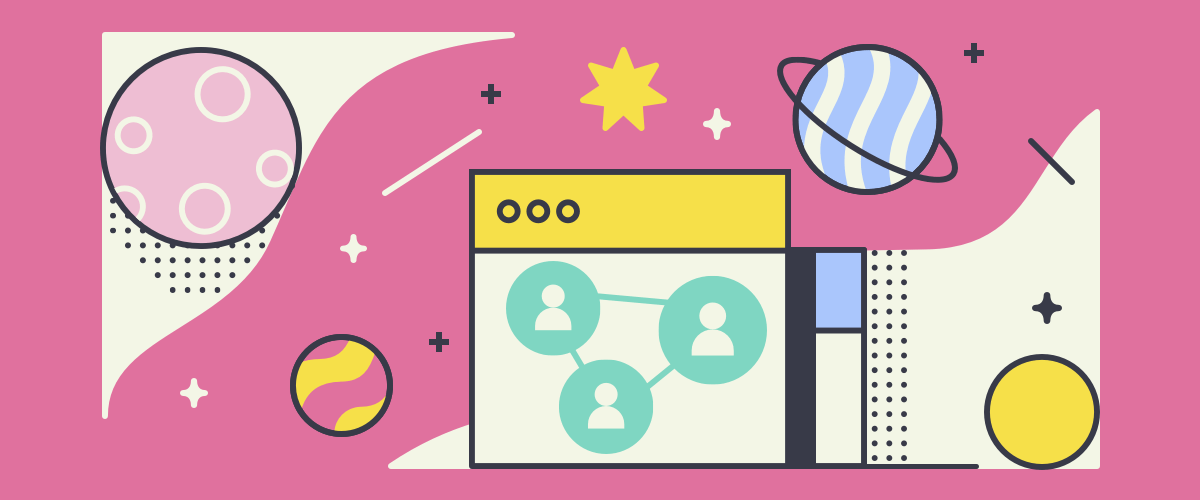7 Things Destroying your Web Design

Web design is an artful blend of art and science. When you get it just right, the results can be breathtaking, but it’s all too easy to make mistakes and ruin the end result.
In today’s world, good web design is essential. Customers have come to expect nothing but the absolute best from brands, and anything that falls short of their brutally high expectations will fail to capture their attention.
In this article, I’ll look at a few common mistakes that can destroy web design, from trying to do too much at once to misuse of images and failing to understand your audience.
Why web design is so important
Your web design is essential for lots of reasons. One of the main reasons is simply credibility — 75% of website credibility comes from design, which means your users will take you less seriously if you have a poor web design.
Good design is your way of making a positive first impression on your customers, hooking their attention and drawing them in so they can start engaging with your brand, reading your content, and get started on the path to becoming a buyer of your products.
Good web design shouldn’t be seen as a perk or optional extra — it’s the very foundation of your entire website. Without good design, you’ll lose customers and miss out on revenue. However, many companies are falling behind due to common but devastating mistakes.
Seven web design mistakes that cost brands money
1. It has an outdated design
94% of users no longer trust outdated websites, which means brands who fail to prioritise a modern, up-to-date look are literally losing their customers’ trust. Spend time investing in regular updates and tweaks to your design.
This doesn’t even need to cost much money — most free WordPress themes are designed to look contemporary and clean. There really is no excuse for having a website that looks like it was put together in 2004.
2. It’s not mobile-friendly
Almost everyone today has a smartphone, and they’re using it to access and browse your site. 74% of users are more likely to return to mobile-friendly websites, which means you’re waving goodbye to a massive chunk of traffic if you fail to make your site mobile responsive.
On top of this, Google now uses mobile-first indexing, which means they now crawl the web and index mobile versions of websites first. In other words, it’s essential to make sure your site is mobile-ready for SEO purposes.
3. It suffers from slow loading times
Nobody likes waiting around for a site to load, and in the age of high-speed WiFi and 5G connections, people have an extremely low tolerance for lag. Research suggests that 47% of users expect a web page to load in two seconds, which means any longer than this will leave them frustrated, disappointed, and ready to leave.
Slow-loading sites are a recipe for high bounce rates and damaged revenue. Make sure you invest in web design that prioritises speed and agility.
4. They fail to user test their designs
User testing involves allowing real people to use your site and then collecting feedback in the form of surveys and observational data. It’s the only way to get reliable feedback on your design and find out what people actually like and dislike before you launch. Anything else is just guesswork and speculation.
It’s also important to keep testing even after your site has launched. Make it an ongoing process, where you and your team are constantly monitoring, iterating, and making updates in response to data.
5. It’s too crowded
One common problem with websites is that there’s simply too much going on at once. According to research by GoodFirms, almost 85% of small businesses are guilty of crowding their website with too many on-page elements.
Simplicity is almost always the best policy with web design. Don’t overload your visitors with choices and stimuli; try to drill down your message into a few key points and give your users a small range of important and useful options to choose from. If they wish to seek out more information, they should be able to do so, but don’t force it on them from the start.
6. It’s difficult for visitors to become customers
Your website exists primarily to attract potential customers and convert them into buyers. It’s important never to lose sight of this goal, but many websites fail to make it easy for visitors to become buyers.
Make sure you have clear calls-to-action and “buy” buttons on all your main pages. If your visitor wants to make a payment immediately after arriving, they should have absolutely no problem figuring out how to do so. Remove all causes of friction and eliminate anything that stands in the way of your visitors spending their money.
7. There’s too much text and not enough images
Too many websites cram every square millimetre of their pages with text—endless reams of paragraphs, blurbs, and densely packed information. There are certain places where a lot of text is useful (like blog posts and some sales pages), but your text should be used sparingly and concisely as a general rule.
Instead, fill your digital real estate with high-quality photographs, clean and simple logos, and beautifully designed elements. Remember to leave space and avoid overcrowding, and make the experience visually delightful for your visitors.
Web design is a challenge for every digital business on the planet, and it’s no surprise that many websites suffer from numerous mistakes. The good news is that these errors are relatively easy to spot and correct with some training and support from the right professionals.
To find out how Blue Beetle can help you optimise your web design and many other digital marketing elements, get in touch.
Related posts
Need your own solid online presence with a lucrative inbound funnel?
Tell us what your goals and objectives are, and we’ll help you hit them 🎯.





